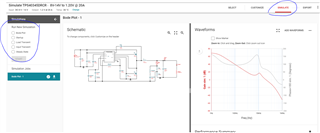Other Parts Discussed in Thread: TPS40303
Not able to get the AC model for DCDC converter designed using TPS40345DRCR in Webench power designer tool. When exported to TINA TI, every time only transient model gets exported.
The website for TPS40345 only contains transient model.


